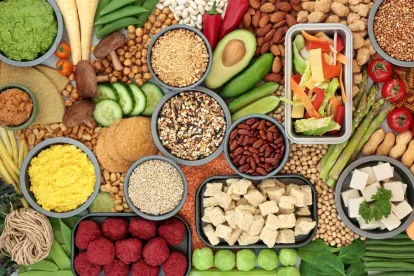On April 19, 2023, the China National Center for Food Safety Risk Assessment (CFSA) published on its website[1] a draft amendment to the GB 4806.1 Standard on the General Safety Requirements for Food-Contact Materials and Articles (Draft Standard). This is the first proposed amendment to the GB 4806.1-2016 Standard, which took effect in 2017. Once finalized, the updated GB 4806.1 Standard will impact industry compliance with China’s food-contact material (FCM) regulations. We provide below a summary of the key changes in the Draft Standard.
Effective Barrier and Complete Barrier
The Draft Standard retains the concept of “effective barrier” (i.e., the functional barrier doctrine) that was included in the 2016 version. This doctrine permits the use of substances not explicitly listed in the relevant National Food Safety Standards – excluding carcinogens, mutagens and reproductive toxins (CMR), and nano substances – in FCM and articles outside the barrier (not in direct contact with food), provided migration does not exceed 0.01 mg/kg (10 ppb).
In addition, the Draft Standard introduces a new concept of a “complete barrier.” As defined in Section 2.15, the complete barrier refers to the barrier composed of one or more layers of materials on the outside of food-contact materials and articles, which is used to prevent the migration of all substances on the outside (non-food contact side) and ensures that all substances on the outside do not migrate into food or food simulants. Section 3.7 indicates that materials and articles outside the complete barrier layer are not considered “food-contact materials and articles,” and manufacturers are responsible for ensuring that there is a complete barrier layer during the product’s shelf life. Notably, the Draft Standard does not explicitly define any threshold for determining “no migration.”
Food Raw Materials
Section 4.1.2 of the Draft Standard provides that “food raw materials” (食品原料) permitted to be used in China can also be used in the production of FCM and articles, and the relevant raw materials must comply with the corresponding National Food Safety Standards and/or relevant announcements. Although no definition for “food raw materials” is provided in the Draft Standard, this term generally does not include “food additives” in the context of Chinese food regulations. Food additives are regulated under China’s GB 2760 Standard, but China does not maintain a positive list of permitted “food raw materials.” Some, but not all, food raw materials used in China have corresponding National Food Safety Standards.
Labeling
The Draft Standard provides more detailed requirements for the labeling of food-contact materials and articles (e.g., how to properly label the product name and the product material type). Further, the serial number of the National Food Safety Standard that the product meets must be labeled. Unlike the current GB 4806.1 Standard, the Draft Standard no longer allows the required labeling information to be communicated in accompanying documents (e.g., instruction manuals) if it cannot be fully disclosed on the label due to technical reasons. This is a major change to the communications requirements under the GB 4806.1 Standard.
Declaration of Compliance
Similarly, the Draft Standard also gives more details as to what should be contained in the Declaration of Compliance (DoC). Notably, as it relates to restricted substances that must be listed, Section 7.3.2.1 of the Draft Standard provides that restricted substances not only include those with the use level, SML/SML(T), residual level, and other restrictive requirements listed in National Food Safety Standards, but also include “substances that require further downstream safety assessment and control, such as NIAS.”[2] Moreover, Section 7.3.2.2 requires that the DoC include the Chinese name and the CAS Registry Number of raw material if it is necessary for supervision or safety assessment purposes.
FOOTNOTES
[1] https://www.cfsa.net.cn/Article/News.aspx?id=DEF0DAEEB977D067A6EDE0F2F29388D30A540987CDA79D45
[2] SML = Specific Migration Limit
SML(T) = Total Specific Migration Limit
NIAS = Non-Intentionally Added Substances





 />i
/>i

